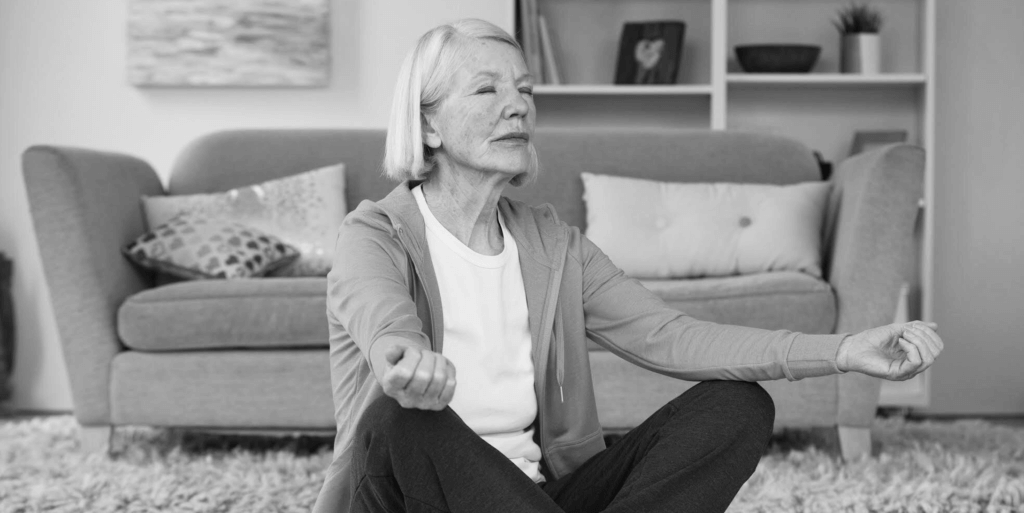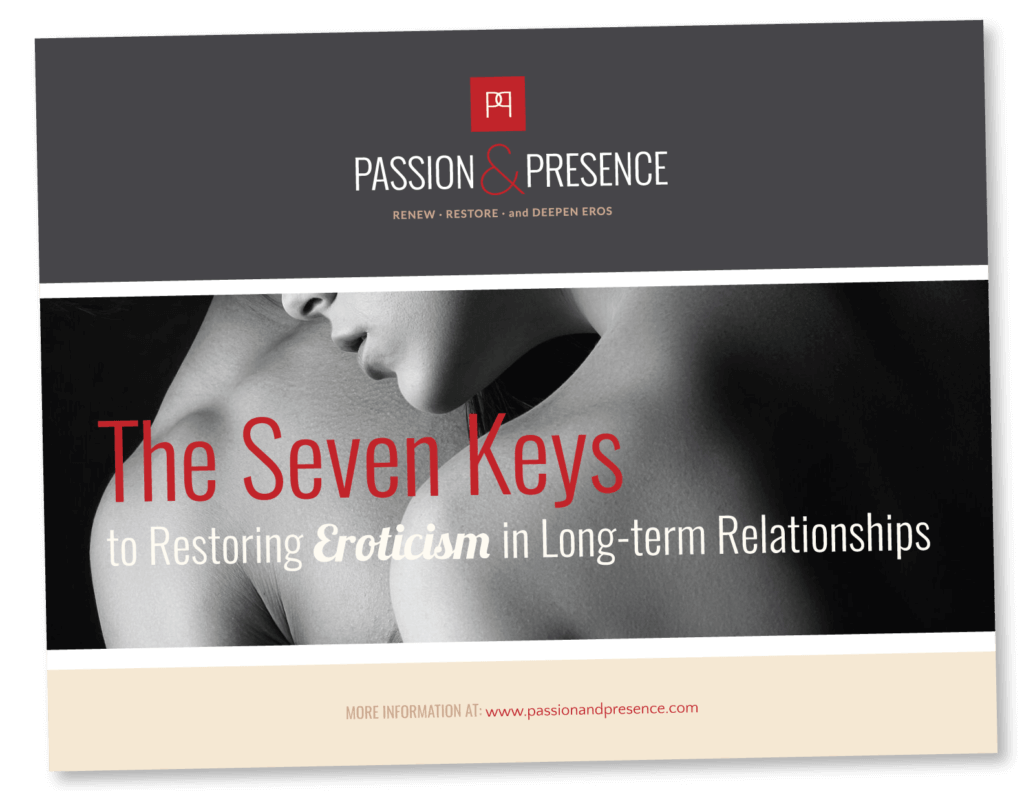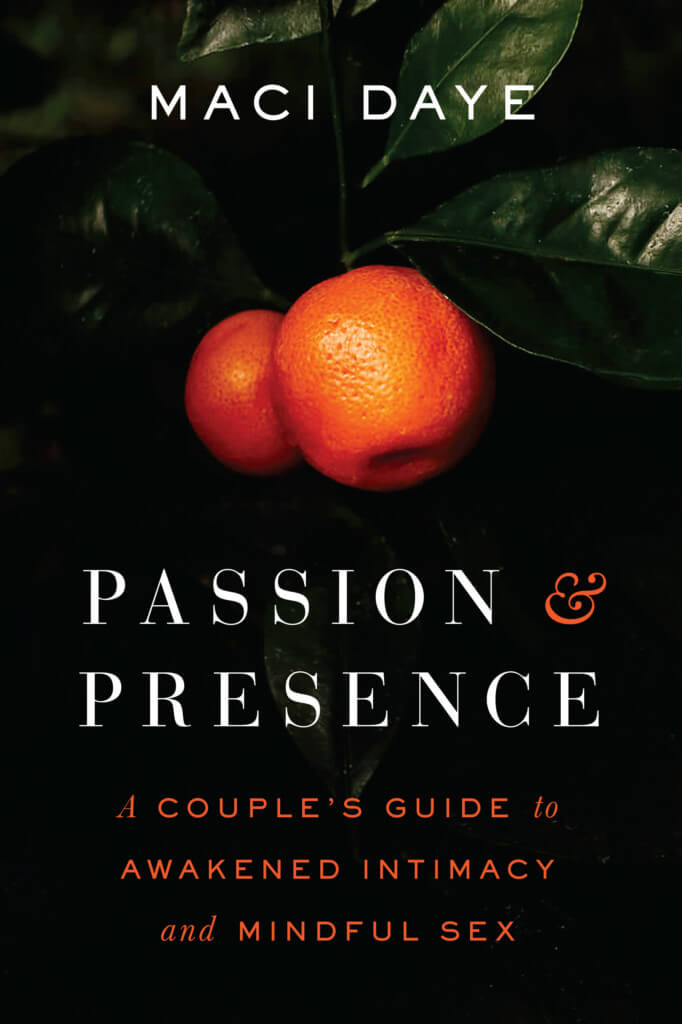It’s an odd disjunction to be in a high-touch field—intimacy, and sexuality—during an epoch of social distancing. At the same time, we are living in a time of forced togetherness as couples and families, while grappling with significant anxiety.
Perhaps you feel like the end of days is upon us. Many of us glue ourselves to newsfeeds that tell us the worse is yet to come. While COVID-19 is highly contagious, so are our emotions. When we are under stress, the people around us feel it, and vice versa. Whereas, we tend to relax when our partner is calm and collected, as I explain in my forthcoming book, Passion and Presence: A Couple’s Guide to Awakened Intimacy and Mindful Sex.
We all want to keep ourselves and our families safe right now, but where is the line between denial, realistic caution, and overblown hysteria? How can we find ways to navigate this time of forced togetherness, without ratcheting up each other’s anxiety? Below is an exercise to help you move out of cycles of dysregulation into states of resiliency as a couple. It is based on research that indicates when we feel empathic and touch our partner, our breath synchronizes and the sensation of pain goes down. We can experience similar effects by sitting back-to-back, especially if full frontal contact feels risky right now.
Some Reliable Ways to Calm COVID-19 Anxiety and Boost Immunity.
There are plenty of reasons why COVID-19 could keep us up at night and tense throughout the day, but there are also reliable ways to lower our stress response, which in turn could improve our immune function. Many resources are available to help you through tough times, so I encourage you to try them out and find the one or ones that resonate most with you:
Savoring, Feeling, and Remembering Safety.
I like Rick Hanson’s motto to “take in the good” as a way to stay in good states. Anytime we feel peaceful, inspired, moved, or in positive resonance with others, we can let the feeling penetrate to the core of our being. These re-set moments, where we switch the dial from stress to safety, or from “could be” to what “is” changes our set-point.
The author of Resilient, How to Grow An Unshakable Core of Calm, Strength, and Happiness, Hanson explains how our brains naturally absorb “bad” news to a far greater extent than good news. Our “negativity bias” can run amuck if we don’t also savor the good. His three-step process for doing just that involves looking for good facts and turning them into good experiences, letting ourselves enjoy those experiences, and letting them sink in.
Instead of focusing only on the “bad” stuff, redeploy your mind to find ways to deepen your connections to your partners, children, friends, and members of your communities. You can change the channel by focusing on random acts of kindness. Ask yourself, “What can I do to pay it forward?”
When fear persists, and you feel down on yourself for being “weak,” it may help to remember that throughout the world, others are feeling just as you are. Your response is a natural human experience. Then, mindfully be with your reactions and let your embodied intelligence help you ground, connect, and move back to feeling safe.
Call up memories of feeling safe and put yourself back into the memory as if it is happening now. Give yourself time to re-experience what your body calls “safety.” You may notice you breathe more fully, or the temperature in your body rises or cools. Perhaps your face and belly soften, or you become more rooted to the chair.
Use your felt sense to locate an area that feels calm and safe, even if it is only a knuckle or ear lobe. Let your attention rest there. You can then find the second most comforting part of your body and so on until you recover a more tranquil state of mind.
Thinking, Breathing, and Moving.
If we have fallen into a fear trance, where we experience nothing but fear, movement can help. When fear spikes into a panic, we stop reasoning, explains the psychiatrist Judson Brewer. At this stage, we can become combative or shut down. We often confuse our beliefs with the truth. We can forget other realities are playing on simulcast and that we have some choice regarding which channel we tune into right now.
Practicing mindfulness can help you dis-identify from catastrophic thinking. We can recognize that a thought is not always real. An excellent way to work with extreme states of anxiety is to let your scary images and thoughts recede and focus exclusively on the sensations in your body.
Movement and exercise are excellent ways to lower anxiety and depression. We tend to freeze when we feel frightened and powerless. Even tiny movements of your head, neck, fingers, or joints can help loosen the grip of frightening images, thoughts, and emotions. As for exercise, you can find lots of free videos on YouTube to work out to at home. Gaia.com offers a plethora of yoga classes and guided meditations to stay grounded and centered.
Paying attention to how you are breathing can also radically change your state. Shallow breathing in the upper body, or holding your breath contribute to stress while breathing from your gut, slowing down the breath, and using a technique called the 2-1 breath are all stress-inhibiting. With the 2-1 method, you count the length of your inhale and exhale for twice as long.
What’s Your Passion & Presence Playlist?
We can calm our anxiety in these powerful ways, and at the same time, we can find ways to feel more fully alive. What feels uplifting, enriching, and fun for you?
It’s lovely to see how so many musicians, artists, opera companies, and other institutions such as New York Public Library or PBS have made their offerings free and online. As you explore these options, you could think of it as putting together your own personal “playlist” of music, art, and books that help keep you present and passionate about life.
We will be sharing these offerings through my Facebook page, Passion and Presence, so please check it out and tell us what is calming and uplifting for you.
What Works Best for You?
So, after you’ve tried some of these strategies, ask yourself what calms you most effectively? It is reaching out to others over the phone or video chat, listening to calming or mood-boosting music, looking at photos of loved ones, or petting your dog? Is it using one of the many apps that are now available to lower anxiety? Or is it sticking to familiar routines that put your mind on something ordinary and predictable?
Notice what both lightens your spirits and builds your resilience. What is it that calms your anxious brain as you live in this age of social distancing?
Stay tuned for more ways to stay calm and connected during self-quarantine.
Warmly
Maci Daye












